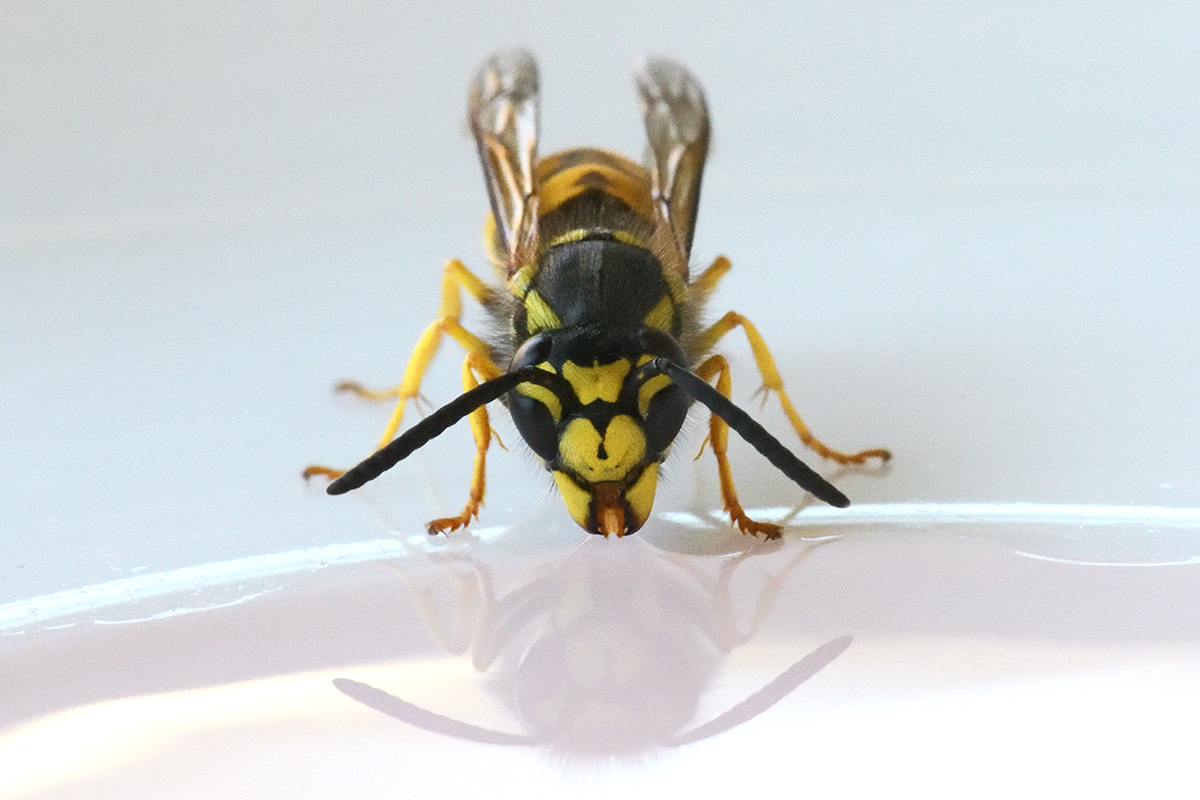Common wasps can be distinguished from other wasps by the anchor-shaped mark on its face. Workers of the common wasp are 12 to 15 mm long, which is about the size of a honeybee. They are bright yellow with black stripes running down their back. The wings, two pairs per wasp, are long and transparent. The long, robust antennae are black and the legs mostly yellow. The sting is located on the end of the abdomen. Queens, skillful nest builders and egg-laying machines, can only be seen at the end of autumn and in spring. They look like worker wasps but are larger (20 mm).
Worker wasps nourish themselves with sugar-containing foodstuff, such as secretions from sucking insects, fermenting fruit and people’s food and drinks. They feed their larvae with other insects and spiders which they catch and kill, or with bits of meat from carrion and pet food bowls. The nest population may be several thousand wasps strong by the end of summer. At the end of autumn, several eggs develop into new queens and males, which leave the nest and mate. The new queens seek out suitable places to overwinter. The males and the old colony, including the old queen, die.
